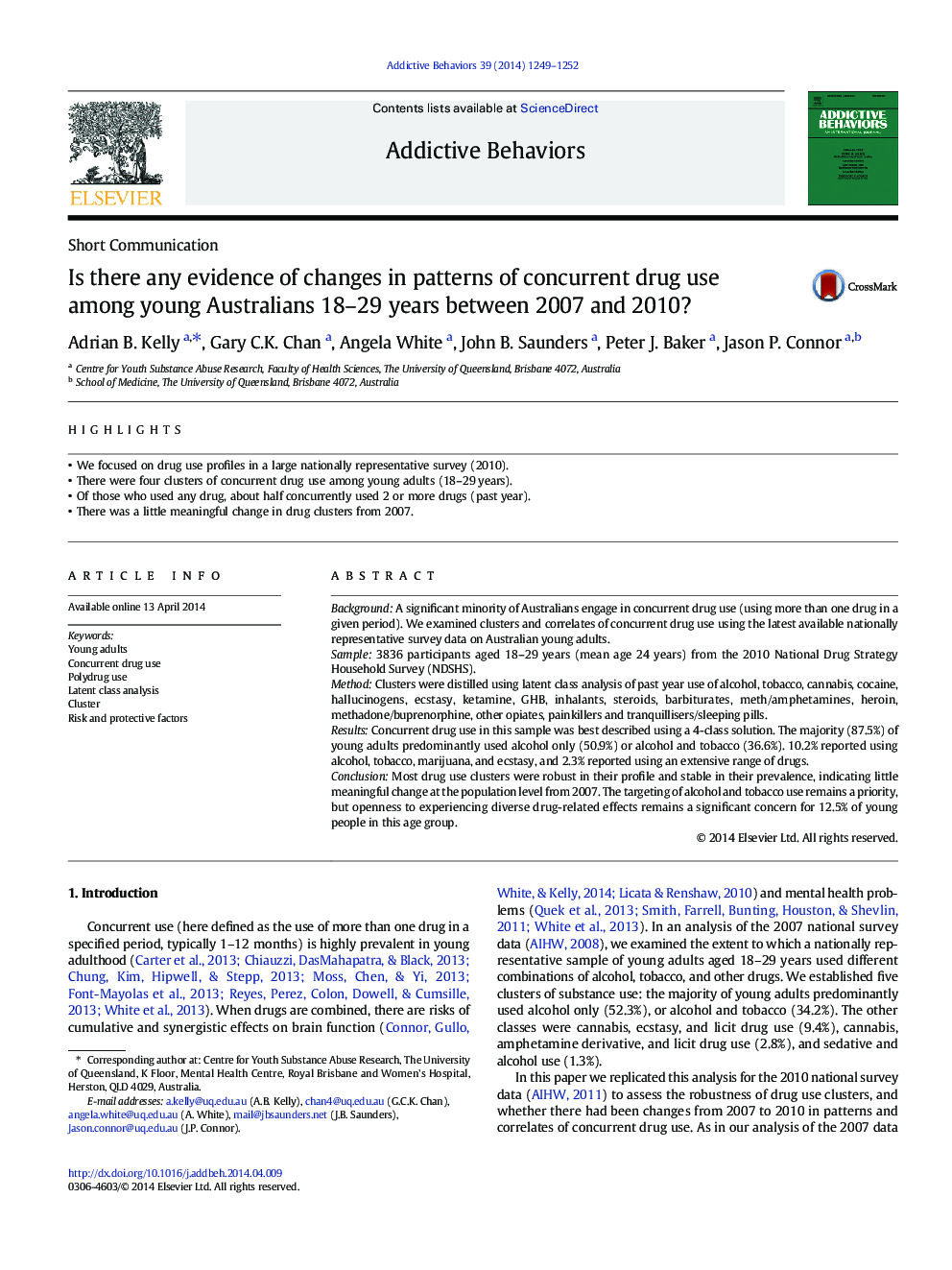| Article ID | Journal | Published Year | Pages | File Type |
|---|---|---|---|---|
| 898877 | Addictive Behaviors | 2014 | 4 Pages |
•We focused on drug use profiles in a large nationally representative survey (2010).•There were four clusters of concurrent drug use among young adults (18–29 years).•Of those who used any drug, about half concurrently used 2 or more drugs (past year).•There was a little meaningful change in drug clusters from 2007.
BackgroundA significant minority of Australians engage in concurrent drug use (using more than one drug in a given period). We examined clusters and correlates of concurrent drug use using the latest available nationally representative survey data on Australian young adults.Sample3836 participants aged 18–29 years (mean age 24 years) from the 2010 National Drug Strategy Household Survey (NDSHS).MethodClusters were distilled using latent class analysis of past year use of alcohol, tobacco, cannabis, cocaine, hallucinogens, ecstasy, ketamine, GHB, inhalants, steroids, barbiturates, meth/amphetamines, heroin, methadone/buprenorphine, other opiates, painkillers and tranquillisers/sleeping pills.ResultsConcurrent drug use in this sample was best described using a 4-class solution. The majority (87.5%) of young adults predominantly used alcohol only (50.9%) or alcohol and tobacco (36.6%). 10.2% reported using alcohol, tobacco, marijuana, and ecstasy, and 2.3% reported using an extensive range of drugs.ConclusionMost drug use clusters were robust in their profile and stable in their prevalence, indicating little meaningful change at the population level from 2007. The targeting of alcohol and tobacco use remains a priority, but openness to experiencing diverse drug-related effects remains a significant concern for 12.5% of young people in this age group.
